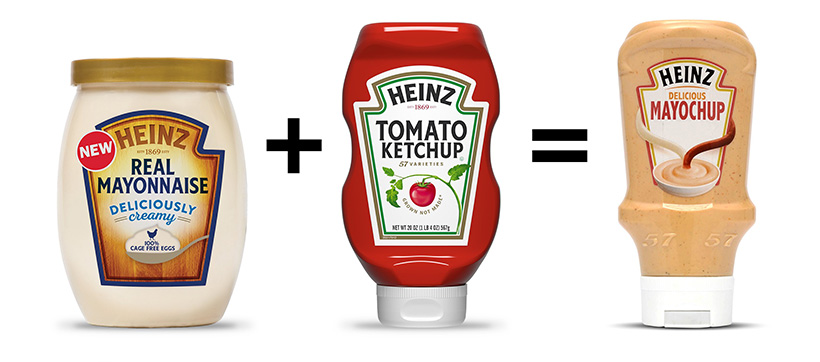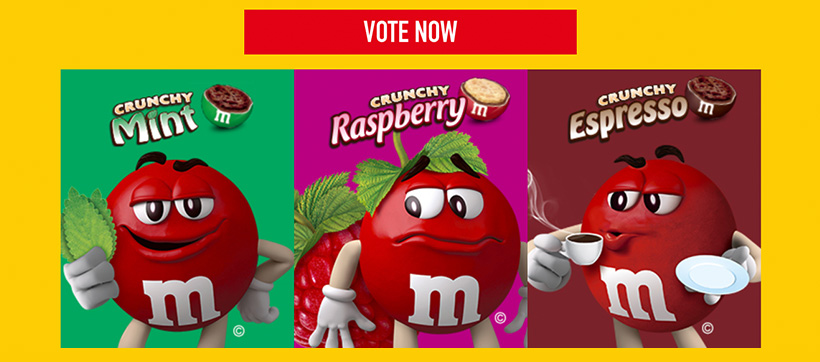 When creating and publishing content, the constant churn can become overwhelming — zapping you of your ability to keep track of new tools, tactics, and best practices. Fortunately, we’ve got you covered with all the news you need to know in this week’s Content Radar.
When creating and publishing content, the constant churn can become overwhelming — zapping you of your ability to keep track of new tools, tactics, and best practices. Fortunately, we’ve got you covered with all the news you need to know in this week’s Content Radar.
What you can learn from Heinz and M&M’s customer co-creation efforts
Any company wants to have an engaged and active consumer base who is passionate about their products. However, many brands stop short of fully engaging their audiences to become active participants — or co-creators — in digital product marketing efforts.
Digital strategist Osama Malik spoke during a TedX Talk about the opportunities that come from co-creating:
“This concept of co-creation has been around for a long time,” Malik said. “The idea of collaboration on art has been around for a long time. However, in the hyperconnected digital world that we live in today, the ability to co-create and to work together, and be able to connect with people on a more diverse set of creative topics than ever before is possible. And that’s really, really exciting.”
In the last couple of weeks, two brands have doubled down in utilizing consumers to help their companies make significant product decisions. With both brands — Heinz and M&M’s — there are lessons to be learned.
Heinz
What’s the product?
In a (much-disputed) word: Mayochup. Yep. It’s a combination of mayonnaise and ketchup in one jar, meant to relieve the overwhelming burden of mixing the ingredients yourself.
How did they promote it?
Heinz turned to Twitter with the following invitation: “Want #mayochup in stores? 500,000 votes for “yes” and we’ll release it to you saucy Americans.” That’s it. The company released a single tweet, then relied on consumers, foodies, trolls, and the like to do the rest.
How did they decide to pull the trigger?
The company saw the required 500,000 users vote “yes” and the decision was made. Of course, more than 45 percent of respondents voted no, so the voting certainly wasn’t a landslide.
What’s the feedback?
Given the fact that hundreds of thousands of people voted no, you’d be correct in assuming that the response is mixed. But for Heinz, the amount of publicity gained by a single tweet is more than enough of a reason to put up with a few #mayochup haters.
How does this relate to your brand?
You probably don’t have the brand recognition that Heinz has, but that doesn’t mean that you can’t employ some of their same tactics. If you are considering carrying a certain product or providing a specific service, you can utilize polls on Facebook and Instagram to get feedback from your audience to see how they feel about the idea.
M&M’s
What’s the product?
M&M’s is ready to launch one of the following new candy flavors: crunchy raspberry, crunchy espresso, or crunchy mint.
How did they promote it?
M&M’s has created a “Flavor Vote” site that allows users to vote on which of the flavors they want to vote for. Users may vote on the site by clicking a button or by uploading a selfie. Consumers also may text in their vote or vote with the #VOTECRUNCHYRASPBERRY, #VOTECRUNCHYESPRESSO, or #VOTECRUNCHYMINT hashtags.
How did they decide to pull the trigger?
Well, they haven’t yet. M&M’s has just started awareness for this promotion and is still giving some more time for people to vote. Presumably, however, the candy that gets the most votes will be released to the masses.
What’s the feedback?
So far, there are multiple instances of the hashtags being used on Twitter, so one would assume M&M’s should be pleased. Twitter user @biffloman tweeted the only thing close to negative sentiments: “I think it is completely unreasonable to have to choose between #votecrunchyespresso and #votecrunchymint. I really wish both were always available.”
How does this relate to your brand?
If you are going to give your consumers multiple choices, your best bet is to also give them multiple ways to vote. By offering voting options through social media, web pages, texting, and other options, you’ll increase the likelihood of getting a fair representation of a larger variety of users.
Speculation abounds after some believe Mark Zuckerberg hinted to Congress that an ads-free Facebook could be coming. Estimates put the cost of an ads-free version between $11-14 per month.
Google AMP Stories aren’t bringing in the engagement many brands expected to see when the tool first launched. Publishers aren’t ready to pull the plug yet, but some say initial results are “underwhelming.”
Banner ads may be given new life thanks to augmented reality. Some brands using AR banner ads are seeing as much as 30 percent more engagement.
Facebook has announced that it will expand testing of pre-roll ads. In addition to Facebook Watch, pre-roll ads also may be seen on videos on pages and in search results, but not yet in the news feed.










